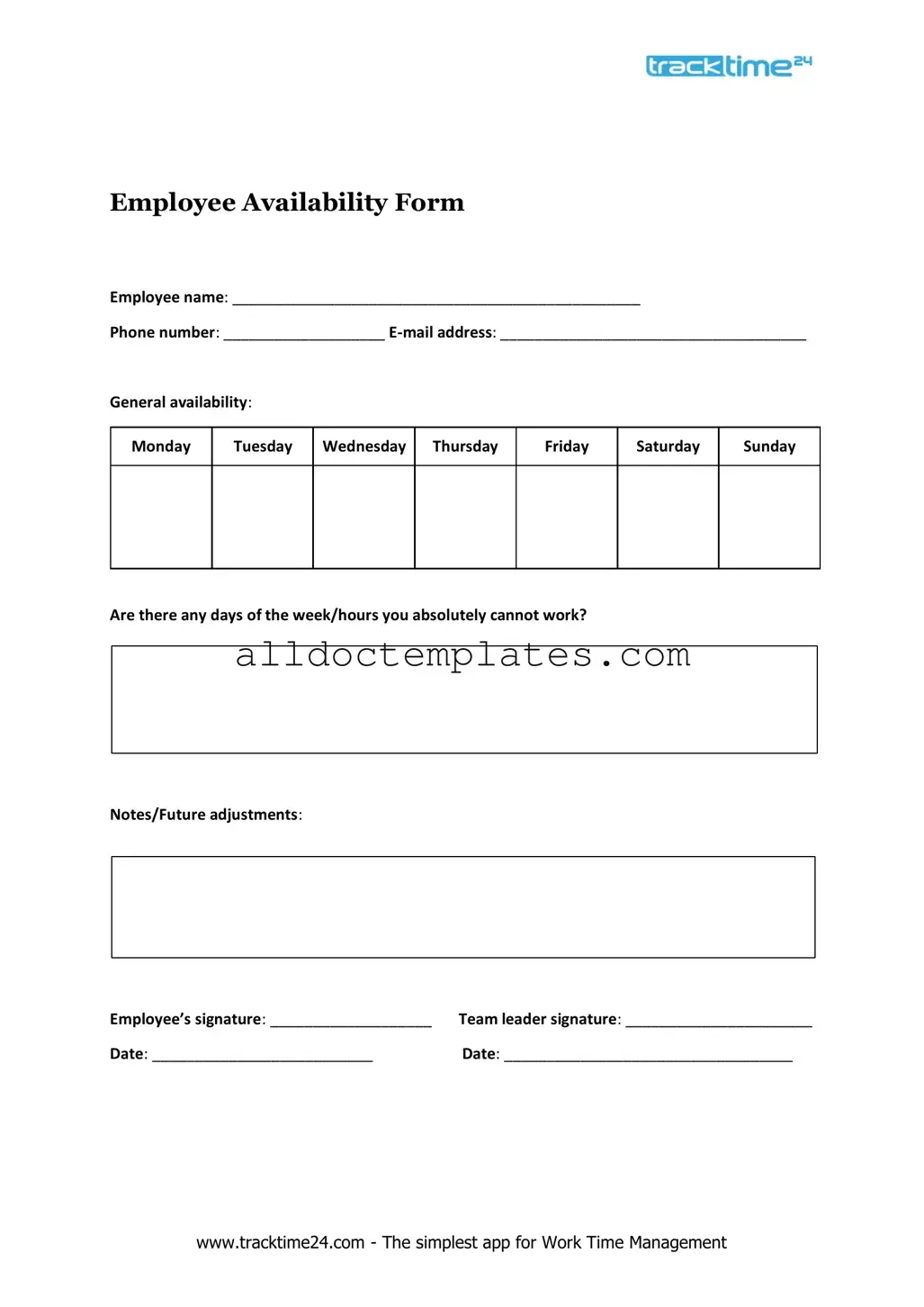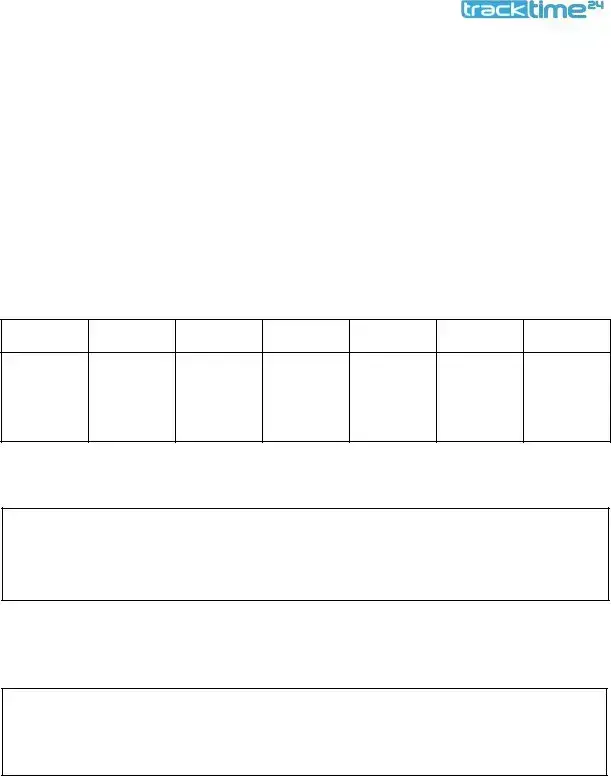Fill in a Valid Employee Availability Form
The Employee Availability form is a document that allows employees to communicate their preferred working hours and days to their employer. This form helps employers schedule shifts effectively while considering the needs of their workforce. Understanding how to fill out and utilize this form can enhance workplace efficiency and employee satisfaction.
Get Your Form Now

